Pure Storage CEO Outlines What It Means To Be A Software, Cloud Company
‘Ninety-five percent of our development team is software-based. But, at the end of the day, what I believe our customers want are outcomes which will be delivered as services. So I think it goes beyond the software or hardware and to delivering services that provide the outcomes our customers want,’ says Pure Storage CEO Charles Giancarlo in an exclusive CRN interview.

Less Focus On Hardware, More Focus On Software, Cloud, Services
Pure Storage is a storage software vendor disguised as a storage hardware vendor. The Mountain View, Calif.-based company is known best for its FlashBlade and FlashArray all-flash storage arrays, and as one of the top two independent storage vendors. But look under the hood, and you can see a software company.
Pure Storage CEO Charles Giancarlo, in an exclusive discussion with CRN, said 95 percent of his company’s development is focused on software, leaving just enough to develop the underlying hardware on which that software is run. The company is also pushing the envelope on storage services, both on-premises and in the cloud, looking to give businesses the option of running their workloads in whatever environments they see fit in a consistent manner, giving channel partners the ability to generate recurring revenue, he said.
“Increasingly, we’re making customers capable of managing their data just as if it were on the cloud itself,” he said. “So completely accessible through our web-based management system, through Pure1, orderable through Pure1, transparent pricing on Pure1. And over time, they’ll be able to move their data, to have their data automated from a backup or from a disaster recovery standpoint, and have that be entirely accessible by code.”
For a look at how Pure Storage is remaking itself, including how it is using its recent acquisition of Kubernetes storage leader Portworx to add new services, what to expect in 2021 on the product side, and how it sees its competitors like Dell Technologies and NetApp, click through our slideshow.
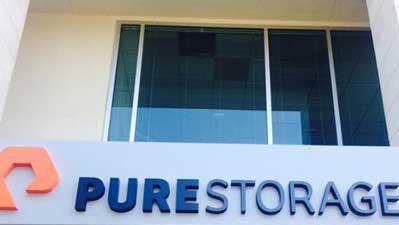
What is the latest at Pure Storage? What is Pure Storage working on now that we can expect to hear more about in the future?
We continue to develop and work further on our Pure-as-a-Service set of capabilities. And it goes beyond just the financial model. It really goes to the way that companies and organizations are able to interact with their data and with their storage. We were the first to market with a complete as-a-service model where from a financial standpoint customers only pay for the amount of storage capacity that they use when they use it and regardless of where they use it. They can use it on-prem or in the cloud. But increasingly we’re making customers capable of managing their data just as if it were on the cloud itself. So completely accessible through our web-based management system, through Pure1, orderable through Pure1, transparent pricing on Pure1. And over time, they’ll be able to move their data, to have their data automated from a backup or from a disaster recovery standpoint, and have that be entirely accessible by code.

How does the recurring revenue model for channel partners work on that?
The transitions to subscription and as-a-service models are challenging for everyone. They’re challenging us. They’re challenging for the channel partners. So we are compensating channel partners up front based on a customer’s minimum commit. So the way that our Pure-as-a-Service is structured is very similar to the way that all cloud services are structured: the customer will put a minimal commitment up front, usually for one to three years. And based on that minimal commit, Pure provides the customer the set of services, but we also pay the partner. We provide a discount to the partner based on the minimal commit. So the partner gets their money upfront.
So where could you see Pure Storage expanding on Pure-as-a-Service this year?
Well, already we’re expanding our Portworx [Kubernetes technology] to Pure-as-a-Service. For those who are unfamiliar, Portworx provides a software-based storage platform for Kubernetes and container-based workloads. We have now rolled this into the Pure-as-a-Service program so it can be acquired entirely on subscription and made transparent to our customers from a contract standpoint.

What else can you do with Pure-as-a-Service to expand it in the future?
Today Pure-as-a-Service tends to be array by array. We’re now building the technology that will allow customers to utilize the entire set of capabilities as an SLA (service level agreement) inside their own data centers, meaning that they won’t be thinking or looking at individual arrays tied to their workloads. This will truly act as storage-as-a-service able to be deployed and configured entirely through code and delivered to applications on demand. So it’s really quite unique in the on-premises environment. And because Pure-as-a-Service is enabled both with our arrays on-prem and also with our software on AWS and Azure, it will truly be a multi-cloud service.
So if somebody is running it on the cloud, then there doesn't have to be any Pure Storage hardware behind it. How about if it's running on on-prem?
If it’s on-prem, it runs on Pure hardware. But again, that hardware is transparent to the customers. Pure owns it. We maintain it. We upgrade it all non-disruptively to the customer. The customer simply is able to enjoy the benefits of storage-as-a-service.

You have characterized Pure Storage as a software vendor. Could Pure Storage actually exit the hardware business and focus exclusively on the software and the service side?
I’ve described us as a software company, and we are. Ninety-five percent of our development team is software-based. But, at the end of the day, what I believe our customers want are outcomes which will be delivered as services. So I think it goes beyond the software or hardware and to delivering services that provide the outcomes our customers want. And in our case, we’ll be delivering data services. And those data services will not just be storage, they will have resiliency and disaster recovery tied into them, and the ability to layer value-add applications on top of them, such as tiering or the ability to have search or even databases placed in the storage environment. If you think about it that way, the hardware somewhat disappears. But just as Amazon builds their own hardware for their infrastructure, we believe that we provide a superior service by having the hardware that we’ve developed underneath. And we believe that because we’re able to provide better performance, better price performance, and better reliability by having a [custom] hardware underneath the services that we provide.
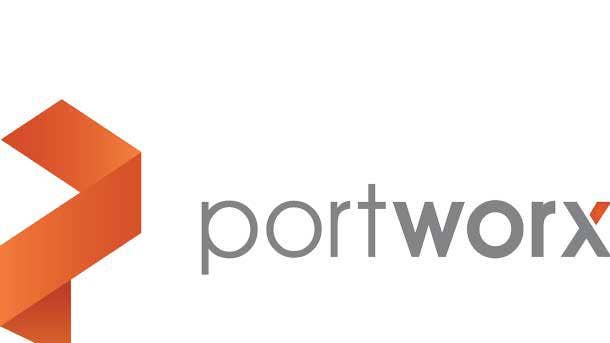
The Portworx integration as part of Pure Storage is done by now. What are some unique things you're doing with Portworx?
Portworx provides both a storage layer that enables container-based, so-called cloud-native workloads to be able to get the type of storage services that they require. And all of it is configured and managed and orchestrated by Kubernetes. So it’s a Kubernetes-based storage environment for container-based workloads. It’s really a fantastic product. We’ve seen tremendous growth since combining with Portworx, and increasingly with very large mainstream customers. One thing that we’re doing: Portworx in the past was sold as software. We’re increasingly bringing it into the service and subscription model. We are making it compatible so that it can be entirely managed with our Pure1 management system.
We’re making it part of our Pure-as-a-Service unified subscription business model and unified contract. That allows customers to utilize any type of our storage under one contract. And increasingly, we are making it compatible with our other storage systems. Often a customer will start out with utilizing just the software to provide the storage services, but then want to upgrade to arrays that are more reliable and have better scale and scaling capability. And we are able to slot in either our FlashArray or FlashBlade into the Portworx environment without disruption to the customer’s application environment. So as they scale from development to test to prototype to production, we’re able to scale with them.

Pure Storage has not done many acquisitions. Why did you acquire Portworx rather than partner with it, or maybe build your own Kubernetes offering based on some of the open source projects available?
Actually we had already started building a Kubernetes-based control layer for managing traditional workloads, which is where our products are typically deployed. It’s on traditional workloads, databases, VDI (virtual desktop infrastructure), advanced analytics, and so forth. That’s an area where we had been very focused. We also had started tiptoeing into the container area with our Pure Service Orchestrator which would prove to be very popular once applications were in production, but less so in development because typically in the development stage, you’ve got two coders and a credit card. They want to start off small. Our arrays start at about $50,000. And so we saw this as an opportunity to get involved early with cloud-native workloads in development.
And when we looked at the market, we saw that by far Portworx was the preferred entity and already off to a great start. And if we wanted to start [in Kubernetes] back when we bought Portworx, we would have been two years late to the market. So from that point of view, we felt that it was really important to pick up the market leader. It had tremendous synergies with what we were doing already. And by combining them, we felt we would be well ahead of the other competitors in the market.

Are there any other areas where Pure Storage could use acquisitions to quickly bring in more skills and capabilities?
You know, we’re always keeping our eyes open and testing the market. At any point in time, we probably have three or four potential acquisitions that we are talking to or working on, but nothing really to talk about right now.
But we can expect more acquisitions from Pure Storage.
Absolutely.
How about Pure Storage as an acquisition target?
We don’t have a ’For Sale’ sign out front. We believe that we’re going to continue to grow and take market share. We believe we’re the only best-of-breed competitor in this market. And we think the industry and our customers really need our type of technology and innovation as they continue to build out their digital transformation. So we’re quite confident of our independent path. But of course we’re a public company, so anything can happen. Most of our competitors, or at least several of the very large competitors, have been acquired. But we’re going to keep trying to outdistance them as an independent company.
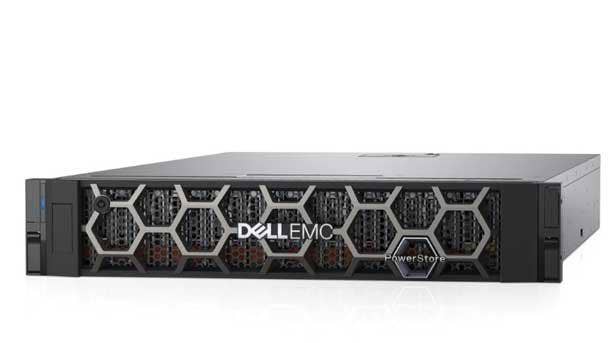
You said that you feel you're the only best of breed competitor in this market. I can think of a few companies out there that might dispute that. What is it that makes you confident to say that?
Well, almost every product that we put out is a first of its kind. That in and of itself puts us in the best-of-breed category. I think we push the state of the art in terms of innovation. You may have seen the most recent Gartner Magic Quadrant in which Pure Storage was both furthest to the right and the upper-most, so the best with the ability to execute as well as having the best vision. By the way, we’ve been furthest to the right every year for seven years. So I think, at least by Gartner’s point of view, we continue to lead the industry in terms of vision and innovation. And we’ll invest about 18 [percent] or 19 percent of revenue this year in R&D. Compare that to any of our large competitors. Dell and HPE spend a fraction of that, less than 5 percent. And if you were to remove the R&D of VMware from the R&D model of Dell, you’d find they spend even less than 5 percent on R&D. So they’re just maintaining a set of products that are getting old and tired, whereas we’re really focused on improving the state of the art.
You mentioned Dell maintaining products that are old and tired. What about its new Dell PowerStore , which came to market last year?
By almost everyone’s review it’s really nowhere in the market. We don’t see it. Our competitors claim not to be seeing it in the market. They’re having a very tough time getting that product. And by the way, it had been promised a year earlier. So it came out well over a year late and still, I think, has a long way to go before it starts showing any real promise.
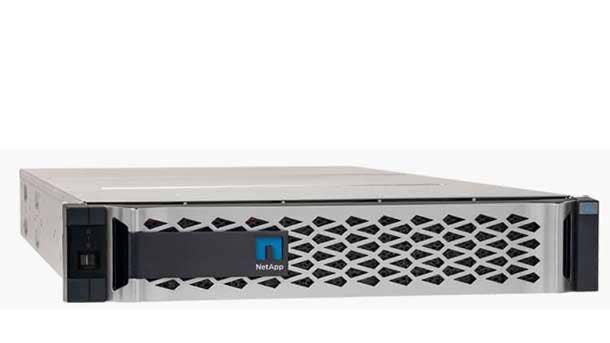
How about NetApp? They've been doing well.
NetApp is the one competitor that we have that continues to innovate. And it’s the one we keep our eyes on from the standpoint of innovation. I believe they’re going in a different direction than us, which is good, because differentiation is probably one of the most important things in the market. But you’re correct. I think that NetApp is the one company we keep our eyes on.
When you say going in different directions, how would you describe the directions of the two companies?
What we’re attempting to do at Pure is really enable a cloud experience for our customers, whether they are on-prem or in multi-cloud environments or hybrid, and to do that through innovation in both storage and data and data management. I believe that to a large extent NetApp is really attempting to orchestrate at the application level. They’re moving up the stack, so to speak, to orchestrate to provide more value at the application level than at the storage level.
And which way is better?
I think they’re both good. They can both be good.
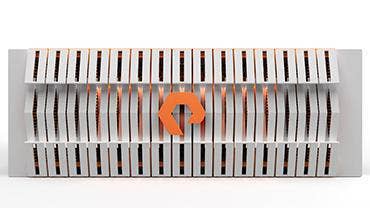
What’s new with Pure Storage’s FlashBlade all-flash file and object storage line?
We announced, I think not too very long ago, that FlashBlade is now approaching $1 billion in total sales. So we’re making great progress as that product continues to really push the state of the art and continues to be adopted by more and more customers. FlashBlade is now in use by over 25 percent of the Fortune 500 and increasingly by more of the of the Global 2000. So we’re very pleased with that product.
How about FlashArray?
We've introduced a FlashArray//C product a little over a year ago. That continues to be the fastest-growing new product we’ve ever developed and that’s going gangbusters.
Further to the conversation we had just a moment ago about innovation: FlashArray//C ... is still the only all-flash product in the market that not just competes with, but is actually less expensive than, hybrid disk arrays. We can provide customers not only a product that’s 10 times denser, requires 10 times less room, 10 times less power, 10 times less cooling, and is 10 times faster, but it’s also less expensive than hybrid disk arrays. When we introduced it, it was novel. No competitor has come up with anything that’s even close to this in terms of being able to address secondary workloads. FlashArray//C continues to be just a great product in the market.
And I’ll just mention Portworx one more time: We’ve now had about two full quarters of Portworx under our belt. And we have beaten Portworx’s own growth plan, their own sales plan, by well over 20 percent in both of those quarters.
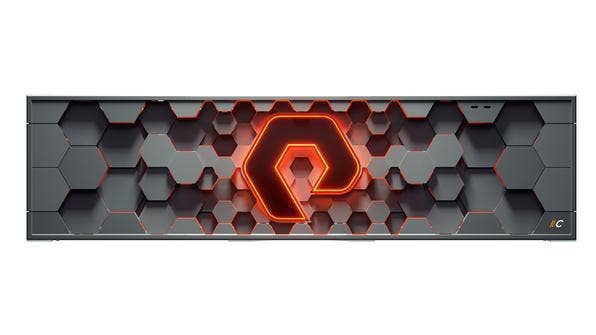
FlashBlade? FlashArray? What are some things the market can look forward to for the rest of the year? Give us some teasers of what's coming up.
What our customers should expect is continued price performance improvements on FlashBlade extending its ability to compete more and more not just for very large data storage environments, but for things like analytics and machine learning and for big data. But you should expect as well that it continues the broaden its ability to support multiple protocols. We just announced, for example, the ability to support what used to be called CIFS and is now SMB 2.1. So it now really can be a general purpose store replacement. But we’re going to see that product really start to extend to the big data environment late this year or early next year.
In terms of FlashArray, customers should expect to really have automation inside their data center environment so their users are able to request and demand and get new workspaces, that is, new volumes or new storage capabilities, and be able to do so on demand just by writing code and have it be delivered in an automated fashion without having to call IT, with having IT manually configure new storage. That’s the direction we’re moving in: the ability to have all this stuff be done on-demand inside your own data center so that our customers can have their data centers look and operate more like the cloud.

How closely is a Pure Storage partnering with the cloud providers themselves in order to bring the Pure technology to the cloud as a native capability?
Well, there are several ways for me to answer this question. First of all, about a third of our sales today are into the cloud. And by ’the cloud’ in this case, I mean, the combination of SaaS providers such as ServiceNow and Workday, managed service providers such as Equinix, as well as major companies that have major clouds such as Epic. The Epic cloud is all Pure-based. And we sell it to other major brand names out there that I can’t mention that also have very, very large clouds. So probably about 30 percent of our sales are to companies such as that.
In addition to that, we have our software operating now on both AWS and Azure. So companies that want block-based services can have highly reliable, but also highly functional, block-based services that are 100-percent compatible with their existing applications and 100-percent compatible with their existing on-prem environments, and to have that on top of their favorite hyperscalers. And when they do that, by the way, that service will be less expensive that the combination of the hyperscaler charges for their services with our charge for the Pure-as-a-Service capability. Those two things together would be less expensive than what it would cost for the native cloud storage capabilities. And it’s because of our ability to do data compression, thin provisioning, as well as the advanced services that we have for things like snapshotting, that we’re able to provide better service at lower cost for customers that operate in the cloud.
And finally, we have very strong relationships with both our managed service provider partners as well as with the hyperscalers where these hyperscalers such as AWS and Azure actively promote our capabilities because they know that customers will have a superior experience and it’ll make it easier for customers to lift and shift their workloads into those environments.
How about Google?
We don’t yet support Google, but that’s certainly something we’re considering now. I will say though, on the Portworx side we support all three of the hyperscalers. So the Portworx data storage capabilities and Kubernetes can be hosted on all three.